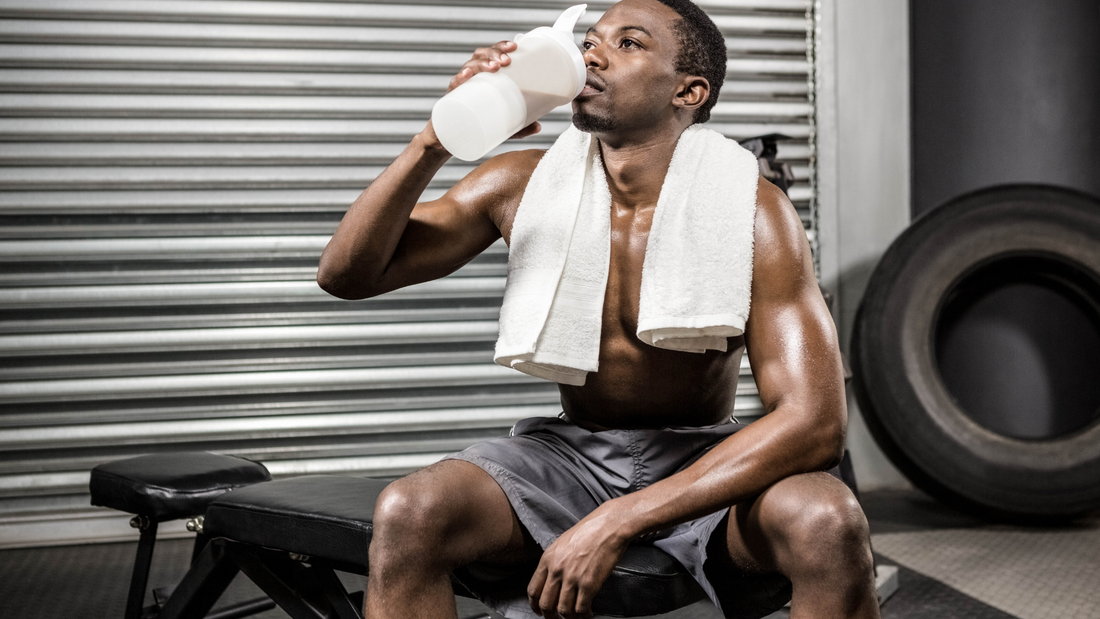Have you ever hit the gym, pushed yourself to the limit, and then scrambled to devour a protein shake straight away to maximize your gains? This common practice stems from the concept of the anabolic window, a theory that has dominated post-workout routines for decades. But what exactly is the anabolic window, and is it truly the key to maximizing muscle growth? Let's take a look at the origins of the anabolic window and the physiological processes at play.
The Physiology Behind Muscle Growth - Breakdown and Repair Cycle, Protein Synthesis, Muscle Fibre Types.
The human body is constantly adapting and responding to the demands we place upon it. During exercise, particularly resistance training, our muscle fibres experience microscopic tears, controlled damage necessary for growth. Following exercise, the body initiates muscle protein breakdown to utilize existing protein for energy and repair processes. The body then triggers a cascade of hormonal and cellular responses to repair the damaged muscle fibres. This is where the magic of muscle growth happens. Protein synthesis is the fundamental process by which new muscle tissue is built. Here's how it works:
-
Dietary Protein: We obtain protein from our diet, which is broken down into amino acids, the building blocks of protein.
-
Muscle Protein Synthesis (MPS): During the repair phase, muscle cells utilize amino acids to create new proteins, including myofibrils, the contractile units within muscle fibres.
-
The Anabolic Window: Traditionally, the anabolic window referred to a theoretical period following exercise when MPS is most elevated, and the body is most receptive to amino acids for muscle growth. (The validity of this window is explored later.)
- Regulation of MPS: Several factors influence MPS, including exercise intensity, training volume, hormones like testosterone and insulin, and of course, dietary protein intake.
The Original Concept of the Anabolic Window - The "Golden Hour" and Early Research.
The concept of the anabolic window has captivated fitness enthusiasts for decades, influencing post-workout routines and fueling countless protein shakes consumed within a narrow window. The precise origin of the anabolic window concept is unclear, but early research in the 1960s and 70s began to establish a link between exercise and muscle protein synthesis (MPS). Studies observed a temporary elevation in MPS following exercise, particularly resistance training. This sparked the idea of a critical window of opportunity, often referred to as the "golden hour," where the body was most receptive to nutrients for muscle growth and repair. One key finding that shaped the early understanding of the anabolic window includes a significant increase in muscle protein breakdown (MPB) after exercise, leading to the suggestion of a window of opportunity for protein intake. Another early study explored the changes in MPS after exercise, demonstrating a transient increase in protein synthesis rates.
Based on these early findings, the concept of the anabolic window gained traction. The "golden hour" belief emerged, suggesting that consuming protein within 60 minutes after exercise was essential to maximize muscle growth. This simple and seemingly clear-cut message resonated with athletes and fitness enthusiasts, leading to the widespread practice of rushing to consume a post-workout protein shake. However, it's important to acknowledge the limitations of this early research, as while the early research laid the groundwork for understanding the anabolic window, science has since evolved.
Later studies revealed an increase in MPS for up to 36 hours after a lifting session, and so while MPS does increase post exercise, it doesn't necessarily equate to a dire need for immediate protein intake. The impact of pre-workout nutrition and overall daily protein intake also wasn't fully explored in many early studies, which has since been shown to impact post-exercise nutrition needs.
The Golden Hour Myth - New Studies on the Extended Window.
The "golden hour" concept, popularized by early research on the anabolic window, painted a picture of a narrow window of opportunity for post-workout protein consumption. This often translated to the widely held belief that you had to slam down a protein shake within 30-60 minutes after exercise to maximize muscle growth. However, recent scientific advancements have shed new light on the anabolic window, revealing a more nuanced picture. The rigid 30-60 minute window simply doesn't hold up under the scrutiny of modern research. Here's why:
-
Extended Window of Opportunity: Studies now suggest that the window for elevated MPS following exercise is significantly longer than initially believed. Research indicates an extended window lasting anywhere from 2-4 hours, even up to 6 hours depending on training type and individual factors. In addition to this, the anabolic effect of exercise is long-lasting (at least 24 hours), but likely diminishes with increasing time post-exercise.
-
Focus on Total Daily Protein: The total amount of protein consumed throughout the day plays a more significant role in muscle growth compared to strict adherence to a specific post-workout window.
-
Pre-Workout Nutrition Matters: Research suggests that pre-workout nutrition can also influence MPS rates. Consuming protein or a combination of protein and carbohydrates before exercise can prime the body for muscle protein synthesis during and after your workout. In fact, one 2017 study found that pre-workout and post-workout nutrition produce similar muscle adaptations.
- Fasted Training: When training fasted, the body's response to exercise differs from a fed state. Since there's no readily available glucose (blood sugar) from pre-workout meals, the body relies more on stored glycogen for energy during fasted training. In the fasted state, the body may break down muscle protein for energy to a greater extent. This means that the window for optimal muscle protein synthesis (MPS) following fasted training may be narrower compared to a fed state. Given the potential for increased MPB and a shorter window for MPS after fasted training, timing of post-workout nutrition becomes more crucial. Consuming a high-quality protein source within a shorter window (ideally within 1-2 hours) after fasted training is crucial to stimulate MPS and counteract muscle breakdown.
The good news for athletes and fitness enthusiasts is that the pressure of the strict 30-60 minute window is alleviated. While MPS is elevated after exercise, the window for optimizing muscle growth is much wider than initially believed. Here are some key takeaways:
-
Prioritize Total Daily Protein Intake: Ensure you consume enough protein throughout the day to meet your individual needs. Aim for 1.4-2.0 grams of protein per kilogram of body weight per day for muscle building goals.
-
Consider Pre-Workout Nutrition: Consuming a combination of protein and carbohydrates before exercise can prime your body for MPS. If you prefer to train in a fasted state, there may be a narrower MPS window.
- Post-Workout Window Flexibility: Aim to consume protein within a 2-4 hour window after exercise, but don't stress about the exact timing. Consistency is key.
In conclusion, you can ditch the stress of the rigid "golden hour" window for post-workout protein. While maximizing muscle growth still requires sufficient protein intake, the window for consumption is much broader than previously thought. Focus on meeting your daily protein needs and adopt a flexible approach to timing. However, for those who train fasted, consuming protein within 1-2 hours after exercise might offer a some benefits. By prioritizing overall protein intake and adopting a relaxed approach to timing, you can optimize muscle growth and recovery without getting caught up in the golden hour myth. The good news is, even though the science behind the golden hour is shaky at best, there's also no harm in downing a protein shake right after your workout if that's your preference. Find what works best for you and your body!

